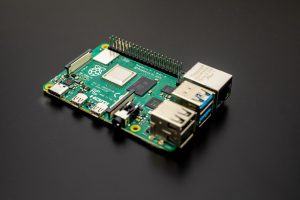We have seen new faces around the Volumio community, so first, we would like to say: Welcome!
We feel very proud of having a great community that shares our same passion for music and great sound, and we are happy you chose Volumio to help you have the listening experience you deserve and build a music player that can adapt to your music needs. With so much info going around (that sometimes can feel a little overwhelming) and many options on how you can use Volumio to the fullest, we wanted to go ahead and give you some tips and recommendations on how to get started and how to get the best out of Volumio.
This is just a quick guide, in the next few weeks, we will go more into depth with the many cool things you can do with Volumio. For now, let’s get started with the basics.
GET STARTED WITH YOUR VOLUMIO MUSIC PLAYER:
SUGGESTED DEVICE
The suggested hardware is Raspberry PI 4, with 2GB of RAM (4 and 8GB are overkill). Pi Zero is not suggested: Volumio works but, it’s very slow and unresponsive.
Considering the current shortage, also PI 3 is a good alternative, but its internal Wi-Fi is known to have issues, so consider using an external supported Wi-Fi dongle for it.
Tinkerboard S is very good, but hard to find.
Last, also PC is a good choice, but considering the countless configurations possible, we can just recommend using Intel NUC.
NETWORK CONNECTION
The biggest limiting factor for a good experience is network connection. If the network connection to your device is not optimal, you will experience disconnection, slow response and sub-optimal audio.
When possible, always use a Wired Connection: this ensures the best stability and swift operation. If you can’t pull a wire to your Volumio, consider a Powerline extender: they offer a reliable connection using your home’s electrical system and they don’t introduce unwanted noise.
Last, if you really can’t, Wi-Fi is a good option if you can use 5Ghz Wi-Fi or you can ensure optimal connection. If you connect via Wi-Fi, check on Volumio Network Settings that you have at least 75mbs speed. Any lower and it means your connection is sub-optimal and you have to try what is suggested above.
POWER SUPPLY
Raspberry PIs are very sensitive to power supply. If the PSU cannot deliver at least 3A at 5V, you’re going to experience instability and SD Card corruption (you have to reinstall Volumio frequently).
The safe bet is going with the official power supply. Don’t save money on your PSU, get a proven quality one if the official power supply is not available.
If you need to use external devices such as Hard Drives, CD Drives, better use a powered USB Hub to compensate for the increased power consumption.
If you use the Raspberry PI touchscreen or an external monitor, use 2 power supplies: one for the PI and one for the display.
CHOOSE A DAC
Volumio works with any USB DAC which is compliant with UAC standards. This means 99% of available USB DACs. If you connect your DAC to Volumio and it does not show up in the Audio Output list, unfortunately you are unlucky to have found this 1%. There’s nothing we can do about it, move on and find another one.
I2S shields are another great option. Before buying your I2S Shield, check on Playback Options → I2S DAC if this DAC is on the list. If it is, good news, it’s compatible and you can go on and get it. If it’s not, it might or might not work, so you’re advised to not get it.
PLUGINS
Even if plugins are carefully checked, we can’t check all the combinations of plugins. So we urge you to just install the plugins you strictly need.
Do not install plugins manually, even if you find many instructions on the forum asking to do so: you’re installing plugins that are not endorsed or validated by the Volumio team, potentially creating stability issues or problems that our support team will not be able to troubleshoot
PLAYBACK OF LOCAL FILES: NAS OR USB
They both work just fine, but for optimal experience and convenience, a NAS is highly recommended. Make sure you get a NAS from QNAP or Synology and you keep your NAS firmware updated (for security and compatibility). Usually, users with not up-to-date NAS cannot use it with Volumio unless they specify special options (like vers=1.0 in advanced options).
VOLUMIO UPDATES
Volumio gets updated very frequently. If you are experiencing an issue, it’s very likely that we already released an update that fixes it. Don’t be the ones that get stuck on an old release because “it sounds better”, check updates frequently and have faith in upgrades.
Usually, when you need to know something when updating, we write it in the changelog. So read it carefully.
Last, make sure you don’t enable TEST MODE on your device, if you do you will receive experimental updates meant only for developers or testers. Those updates can and will introduce unwanted behaviours since we use them to test new stuff. Many people report such misbehaviors only to then discover they are in TEST mode. Do not enable them. If you did, disable them by going to the DEV page and setting TEST to false.
Tip: if you are in test mode, there will be a warning before the changelog stating “WARNING: you are installing a test release”.
SSH AND TINKERING
Volumio is designed to be an open system to allow experimentation. But this requires you to know what you are doing. Usually there are guides that suggest connecting via SSH and performing various manual installs and tweaks. Even if they are written in good faith, there are good chances you will mess up something.
Especially, never ever do apt-get upgrade. This will brick your install.
GET INVOLVED IN THE COMMUNITY
Volumio is what it is today thanks to the music lovers who participated in the community and gave useful insights on their experience and what they wanted Volumio to be.
Join the community and provide your feedback, help others, share your experience. Do it politely and in a constructive way, treat everyone with respect and speak out.
Believe it or not, this really makes a difference.
ENJOY THE MUSIC
Seriously. Don’t worry about your gear, the orientation of your power plug, the resampling algorithm, MQA blue or the current lunar phase. Get involved in what you listen and forget about being an audiophile, at least until tomorrow.



